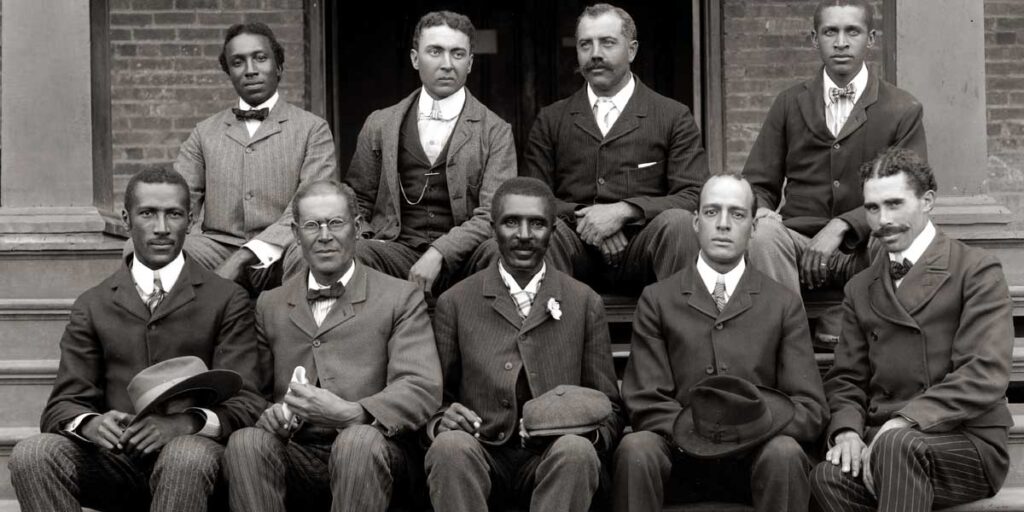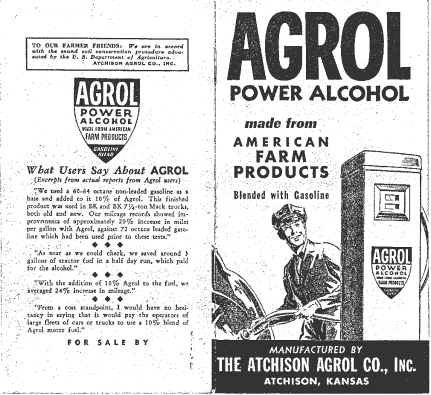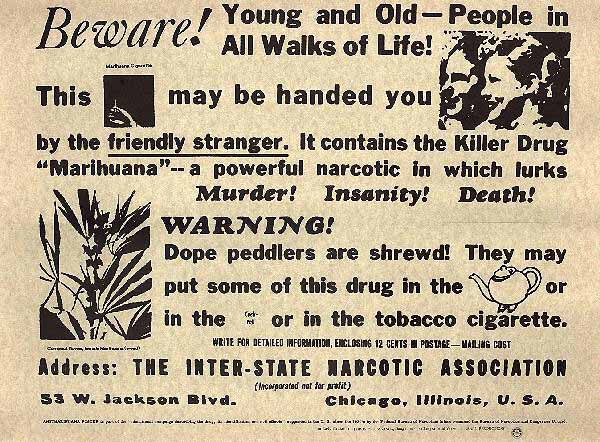Once upon a (unfortunately, very distant) time, there existed a movement whose main mission was to introduce the industrialised world to the use of “chemurgy”.
But what exactly is chemurgy? Well, in a nutshell, it is a field of applied chemistry which focuses on the transformation of vegetal materials into finished industrial products: for example, soy oil into dyes and paints, peanuts oil into lubes and inks, hemp into plastics, paper, fuel and so forth. To put it simply, a production method in which raw materials have the minimal impact on the environment.
It was 1934 when the chemist William J. Hale published “the Farm Chemurgic”, an essay built on the revolutionary idea that farmers should not only focus their efforts on food production but, also, on employing their produce to extract materials such as cellulose, starch and lignite.

Albeit Hale coined the term and introduced his theory to the world, many other personalities of the time were amazed by the idea. George Washington Carver, an African-American agronomist born at the end of the 19th century from slave parents, was able to patent hundreds of commercial products inside the Tuskegee laboratories in Alabama only by analysing plants and their seeds. For example, he found that from the skin of peanuts it was possible to extract cladding for construction and that its proteins could be transformed in fibres. The exploitation of agrarian resources to produce industrial goods could have been the answer to the 1930s downturn, during which granaries were full of unsold produce and millions of famers on the verge of economic ruin.

The chemurgy cause was joined by the famed industrialist Henry Ford, who was introduced to the idea by Thomas Edison. Ford funded the first conventions of the National Farm Chemurgic Council and established, along with his friend Edison, a research centre close to Detroit known by the name of “Edison Institute of Technology”. One of the first and most important investigations was on the use of soy and hemp. The potential of the latter was cited numerous times by the US Department of Agriculture, which in the meantime established four chemurgy laboratories to investigate the areas of application on agricultural products.
This was declared by Henry Ford on the NY Times in 1925:
“The fuel of the future will come from the fruits, roads, apples, grass, sawdust… in a nutshell, from almost everything. There is fuel in every vegetal matter that can be fermented and be source of nutrition. There is enough alcohol in a single harvest from a potato field to fuel the machines needed to farm for at least a hundred years.”
Some 16 years after this interview, the automotive behemoth revealed the “Hemp Body Car”, a car made of – as the name suggest – hemp, which had the qualities of being much lighter than steel and biodegradable. Nevertheless, the true revolution was represented by its fuel: the prototype used ethanol, from fermented hemp, with the minimal environmental impact.

The material was there, the ideas and the needed research was done. It seemed that chemurgy was on the verge of giving the world the natural resources it needed: a fuel that was not only not limited by its sources and that helped build an economy that respected both the consumer and the natural world.


Nevertheless, in front of these developments, chemurgy had to face the biggest conflict of interest in modern history. In the US, William R. Hearst purchased thousands of hectares of a forest to produce enough timber in order to print his popular newspapers. This empire was threatened by the emergence of hemp paper, which was much cheaper in comparison. Another key character from the industry who felt jeopardised by hemp was Lammot Dupont, owner of the homonymic chemicals producer.

https://it.findagrave.com/memorial/99331813/lammot-dupont
At the time, his company was dominant thanks to a series of patents for the production of nylon and other synthetic fibres. Both were financed by the eminent banker Andrew Mellon, also owner of Gulf Oil. On top of the risk for the most important petrochemical companies, there was the newly established pharmaceutical industry, backed by J.D. Rockerfeller and Andrew Carnegie. Both of them fought a war to supplant all natural remedies (especially those that are herb and cannabis based)in the pharmacopoeia.

All these characters had the common intent of getting rid of hemp in the shortest time possible. Fortunately for them, Andrew Mellon was the US Secretary of the Treasury and he was able to nominate as head of the narcotics department his future son-in-law Harry J. Aslinger, already federal agent during the prohibition years.
Hearst used his newspapers to aid a terror campaign against hemp, associating it with syringes, “weird orgies”, “savage feasts”, “unrestrained passions”, insanity and indigence. The smear campaign was kept running by Aslinger’s public-service announcements:
“A marijuana cigarette can make its victim addicted in a few weeks, leading them to the physical and moral ruin until death. The truth is that every joint brings a person to immorality and bestial perversions, brutality, homicides, sexual crimes, mental instability or suicides.”
In addition, during the smear campaign, the name “hemp” was never used. Instead marijuana was employed in its place, a term used by the Mexicans, that helped distract the public opinion as it exploited the racist and xenophobic attitudes of the time.
This media operation culminated in the “Marijuana Tax Act”, which started the prohibition policy towards the commerce, the use and the cultivation of hemp, even though the psychotropic compound (THC) in only present in the flower. The majority of the senators and congressmen that voted for it were not aware that hemp and marijuana were the same plant.

But this was not enough: over the 60s and 70s Anslinger’s initiative was brought directly to the UN: In fact, there the “Single Convention on Narcotic Drugs” was signed and enacted, which as a matter of fact led to a worldwide prohibition.
Chemurgy disappeared and, in concomitance with Ford’s death, the “Hemp Body Car” prototype died too. The hemp-based fuel was discredited by the oil companies, destroying every possibility of development.
It has been 82 years since that law and, to this day, most people are only aware of hemp’s flowers and its psychotropic effects. The industry has effectively moved on towards synthetic materials, derived from fossil fuels, which are almost impossible to dispose of. The world needs around 90 million barrels per day to power machines, industrial production and commerce. Harvesting oil is not easy: in many cases it involves perforating the Earth’s crust for kilometres in some areas of the world. This is not achieved without geo-political conflicts.
Today the discoveries made on chemurgy during the 30s are largely ignored: millions of products are made of synthetic plastics instead of vegetal fibres. Most envelopes, fils and containers, such as food- grade tupperware, are produced from fossil fuels as well. Biscuits, crisps, yogurt, meat, vegetables, frozen food – you name it – use plastic envelopes.
Plastic needs additives to obtain properties such as colour, anti-oxidation resistance, UV screening etc. These substances have a massive issue: they can migrate, through wear and tear, to other things such as food.
The EU officially published guidelines regarding what a 60kg adult can tolerate. How about children? Let us consider for example phthalates, which are additives needed to make plastic pliable: they are, according to the Endocrine Society, persistent organic pollutants and endocrine interferants. This means that this substance is recognised from the body as an oestrogen, creating malfunctions in the organism: for example alterations in the mammary gland are common, which can cause a range of diseases such as breast cancer or inhibit the male fetus growth by blocking testosterone production.
Another endocrine interferant is Bisphenol A. It is produced in the Netherlands in Europe’s biggest refinery, owned by Shell. Bisphenol is linked to the incidence of cardiovascular diseases, diabetes, obesity, male sterility, behavioural disturbs and decreased testosterone production. Another interferant is formaldehyde, a substance present in plastic dishes for children, which has been shown to cause lymphomas and leukaemia.
PFOA is a substance present on no stick pans. A study was carried out in a town close to a Dupont plant (a company that contributed to the “hemp prohibition” campaign), which used PFOA to produce TEFLON, found on most pans. The study showed a correlation between this coating and 6 diseases: high cholesterol, ulcerative colitis, thyroid disfunctions, testicular and kidney cancer, and gestational hypertension. Dupont was accused of having contaminated the town’s water reserves with PFOA and it was condemned to pay 5 million dollars to a man who contracted testicular cancer. PFOA is a persistent substance which is not broken down by the environment, the human metabolism, and sunlight. It does not just represent a threat to humans but also the ecosystem. Green Peace found traces on the Apennines (as high as 2000+ m), in swiss lakes, and in mountain chains in Slovakia, Russia, Turkey. They found traces at 3000m in Chili, at 5000m in China and even near the North Pole.
The disposal of synthetic plastic represents another huge polluting activity. In the Pacific Ocean there is a “patch” of floating plastics and microplastics which extends more then the US.
After 82 years marked by the conflict of interest that brought hemp and chemurgy to the verge of disappearance in an industrialised world, we are all aware of the environmental disasters and of the many diseases caused by synthetic substances. Many summits are organised every year to prove people that the issues of deforestation, of air, soil, rivers, lakes, oceans pollution and C02 are being tackled. But the green revolution brought about in the 30s keeps being ignored.
Unfortunately, hemp is only mentioned to incriminate people that smoke its flowers.








